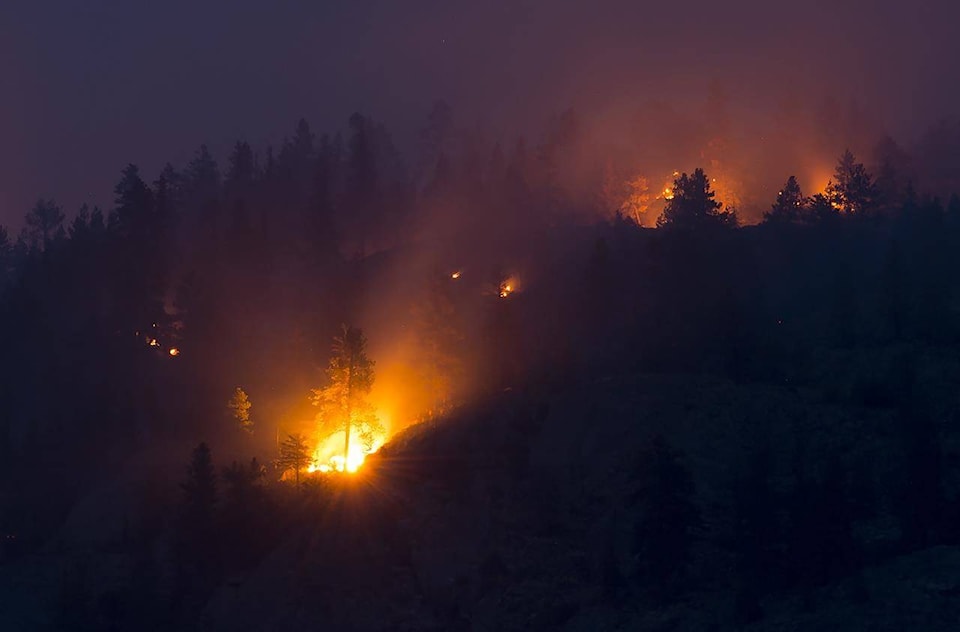Forestry experts hope clear, blue skies hold over Western Canada as unprecedented hot weather pushes wildfire risks to levels just as record-breaking.
“The silver lining to this current heat wave thus far is that it’s so hot and it’s such a stable atmosphere that it’s suppressing lightning activity,” University of Alberta wildfire scientist Mike Flannigan said Monday.
“If there’s no ignition, we don’t have a problem.”
That’s a big if.
A community in central British Columbia broke Canada’s all-time heat record Sunday with a temperature of 46 C and even northerly cities like Edmonton are expected to near the 40 C mark this week. Those temperatures have much of the west nervously eyeing the sky for a spark that could touch off dust-dry forests.
“Temperatures are in uncharted territory,” said Yan Boulanger, a forest ecologist for Natural Resources Canada. “Those indices for forest fire are very, very high right now.”
Just a couple weeks ago, the department’s wildfire risk maps showed most of Western Canada to be at average or even below-average risk. No longer.
“I would say they are extremely extreme right now,” Boulanger said.
So far, wildfires haven’t been a major problem. Although 19 fires have sprung up in B.C. over the last two days, most remain under five hectares in size.
“It’s nice to see our initial attack crews have had that success,” said Jean Strong of the B.C. Wildfire Service.
She said the service is already positioning crews where the heat has been greatest. Airplanes are flying over forests looking for smoke and wardens and enforcement officers are monitoring human behaviour on the ground.
When it’s this hot and dry, preparedness and early attack are key, Flannigan said.
“If they get to the fire when it’s still small, you can put it out.
“But when you get extreme conditions like we’re seeing, that window is 20 minutes. You’ve got 20 minutes to put that fire out, then look out.”
Alberta is facing this year’s fire season with new technology such as drone aircraft and gels that enhance water’s fire-extinguishing capacity. The province cut staffing for fire lookout towers in 2019, but a statement from Alberta Agriculture and Forestry Minister Devin Dreeshen said the government has invested in other tools.
“Alberta Wildfire is always adapting and improving firefighting techniques and technologies from around the world.”
In a release, the ministry said artificial intelligence, crowdsourcing and smoke-spotting cameras will be used to supplement existing wildfire lookouts.
Flannigan points out that early-season wildfires are most often caused by humans. The lightning season, he said, is just beginning.
“If this continues, it could be a horrific summer for fires.”
This week’s temperatures are creating a risk that’s quite literally off the charts, Boulanger said.
“These kinds of situations occur only once in 10,000 years.”
Regions from Siberia to Australia have seen extreme weather conditions and extreme wildfires over the past few years, Flannigan said.
Get used to it, he warned. “This is a climate change signal.”
—The Canadian Press
RELATED: Campfires banned as heat wave cooks the Central Okanagan
RELATED: Resellers marking up air conditioners online as B .C.’s heat wave keeps shattering records
